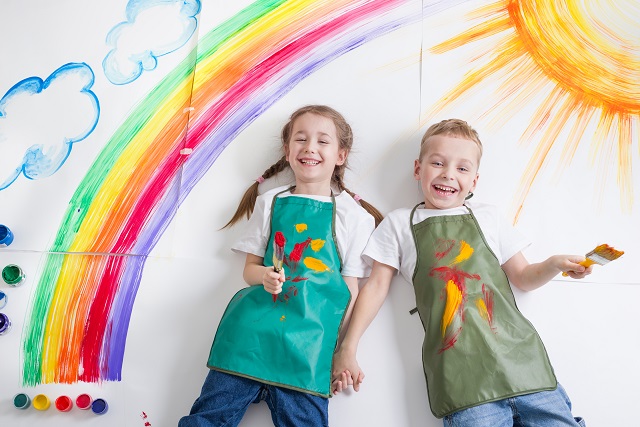Introduction to Montessori
Montessori is a comprehensive educational method that takes a child-centered approach to learning. The method is scientifically based on the key developmental needs of children from birth to adulthood. It is designed to support and nurture children’s needs and interests by providing them with self-directed activity and hands-on learning experience that suits their stage of development.
This method was developed by Dr. Maria Montessori (1870 - 1952) based on her understanding of children's natural learning tendencies.
5 Principles of Montessori
Accredited Montessori teachers implement the Montessori Method according to five foundational principles. These principles are:
- Respect for the child
- The absorbent mind
- Sensitive periods
- The prepared environment
- Auto-education
Respect for the child
Respect is the center of everything in a Montessori classroom. It means the teachers should avoid harm and should not interfere, but have regard for child’s wishes and feeling.
In a Montessori classroom, respect for the child is shown when the teachers help children to do things and allow them to learn for themselves. Children are able to develop self-esteem and skills needed for independent learning when they are given appropriate choices
The Absorbent Mind
According to Dr. Maria Montessori, children learn as a natural part of their development. All children are born with capacity and desire to learn and explore; It is the teacher’s job to encourage this natural inclination by providing stimulating environments and hands-on experiences.
“It may be said that we acquire knowledge by using our minds, but the child absorbs knowledge directly into his psychic life. Simply by continuing to live, the child learns to speak his native tongue” — Maria Montessori.
Sensitive Periods
A sensitive period is a block of time in the child’s life when he or she has a predisposition or sensitivity to learning a specific skill. Once a sensitive period has passed, it will never return in the same way. The child is still able to learn the skill, but with greater difficulty.
Even though all children experience sensitive periods, the timing and sequence will vary for every child.
The Prepared Environment
The "prepared environment" means that the environment can be designed to facilitate active and independent learning. Freedom is the most important characteristics of the prepared environment.
Auto-education
This principle means that children are able to learn by themselves. Children that are actively involved in a prepared environment and who are given freedom of choice educate themselves.
The young child possesses an unusual sensitivity for absorbing and learning from his environment. He has a deep love and need for purposeful work.
Teacher’s Role
The role of an accredited Montessori teacher is that of an observer who intervenes less and less as the child develops. She places trust in the developmental abilities of the children and her first objective is to prepare the learning environment to meet the needs and interests of the children.
Benefits of a Montessori Education
1. Children learn at their own pace and they are able to choose what interests them.
2. The environment is carefully designed to fulfill the child’s developmental needs at different ages.
3. Learning is “hands-on.” Children learn about and through real-world activities.
5. Motivation does not come from awards from parents or teachers. Instead, Montessori takes advantage of the child’s natural inner-drive for exploration.
6. Teachers in (accredited) Montessori schools have specialized training.
7. There is a strong focus on teaching respect.
8. The educational focus is not just on the academics, but also the physical, emotional, social aspect of the development of the children.
9. Learning is often project-based, instead of worksheets and lists to be memorized.
Downside of Montessori
1. Teachers may have trouble letting students pick their own activities.
2. Some students may not deal well with the lack of traditional classroom structure.
3. Students may have difficulty transitioning to a traditional classroom later.
4. As the name Montessori is not patented, copyrighted, the term “Montessori” is able to be used by anyone, whether the school is truly Montessori or not.
Montessori Materials
The Montessori materials in the prepared environment match children’s interests with five curriculum areas: everyday living skills or practical life, sensorial, mathematics, language, and culture (art and music are considered as cultural activities). For example, pink tower, cylinder blocks, colour tablets, constructive triangles are used for sensorial activities, globes, puzzle maps, flags and materials from other cultures are used for cultural activities.
